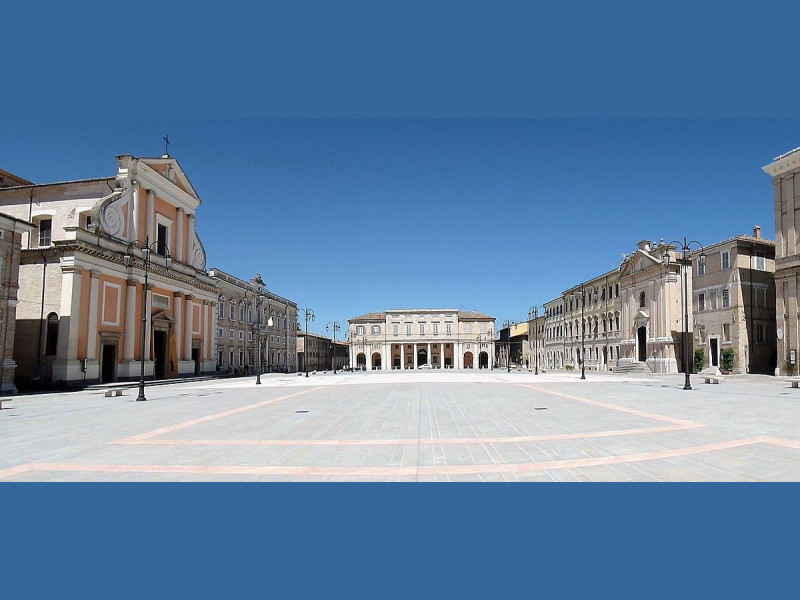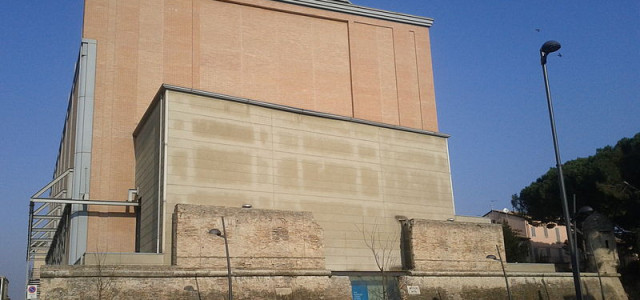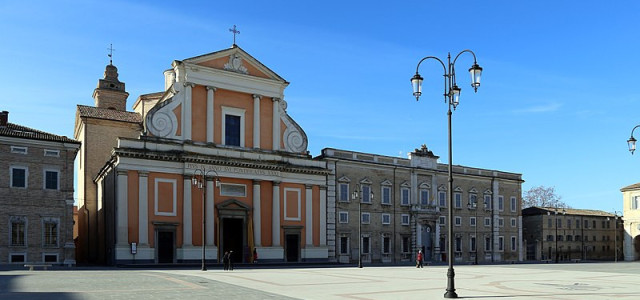Senigallia
Senigallia (or Sinigaglia in Old Italian) is a comune and port town of the province of Ancona on Italy's Adriatic coast, in the Marche region. The small port is formed by the lower reaches of the Misa, a river which flows through the town between embankments constructed of Istrian marble. History The settlement, spread out along the coast at the mouth of the river Misa, was established in the 4th century BC by the Gallic tribe of the Senones. The colony of Sena Gallica was founded there by the Romans after their victory over the Senones, rather before 280 BC. The Latin name is probably a corruption of "Senones"; the addition Gallica ("Gaulish") distinguishes it from Saena (Siena) in Etruria. The place is also mentioned in connection with Hasdrubal's defeat at the Metaurus in 207 BC. It was destroyed by Pompey in 82 BC, and is not often mentioned afterwards. Ravaged by Alaric, Senigallia was fortified by the Byzantines, and again laid waste by the Lombards in the 8th century and by the Saracens in the 9th. It was the second easternmost of the five cities of the medieval Adriatic duchy of Pentapolis, east of Fano and west of Ancona. Senigallia used to hold one of the largest fairs in Italy, which dated originally from 1200, when Sergius, count of Senigallia, received from the count of Marseilles, to whose daughter he was affianced, certain relics of Mary Magdalene; this fair used to be visited by merchants from Europe and the Levant. In the 15th century it was the scene of the Guelph and Ghibelline wars, captured and recaptured again and again by the Malatesta and their opponents. Sigismondo Pandolfo Malatesta of Rimini erected strong fortifications round the town in 1450-1455. The lordship of Senigallia was bestowed by Pius II on his nephew Antonio Piccolomini, but the people of the town in 1464 placed themselves anew under Pope Paul II, and Giacomo Piccolomini in 1472 failed in his attempt to seize the place. In 1503, Cesare Borgia carried out a bloody coup at Senigallia, against some of his disloyal supporters. Sixtus IV assigned the lordship to the Della Rovere family, from whom it was transferred to Lorenzo II de Medici in 1516 by his uncle Pope Leo X. After 1624 it formed part of the Papal State's legation (province) of Urbino. Main sights Despite its ancient origin the city presents a modern appearance, with wide streets. Attractions include: Palazzo Comunale, from the 17th century. The Castle (Rocca Roveresca), of Gothic origin, was restored by Baccio Pontelli in 1492. It has a square plan with four large round tower. The Cathedral, erected after 1787. The church of Santa Maria delle Grazie, outside the town, is one of the only two churches which Baccio Pontellli is known to have executed (the other is at Orciano near Mondavio, about 20 kilometres (12 miles) to the west by road). It housed the painting of Madonna di Senigallia by Piero della Francesca. The Rotonda a mare. Twinned cities Chester, United Kingdom Lörrach, Germany Sens, France Sources "Sinigaglia" — article on the Catholic diocese, from the New Advent Catholic Encyclopædia This article incorporates text from a publication now in the public domain: Chisholm, Hugh, ed. (1911). Encyclopædia Britannica (11th ed.). Cambridge University Press. Senigallia In a Nutshell: An Illustrated Guidebook to Senigallia




